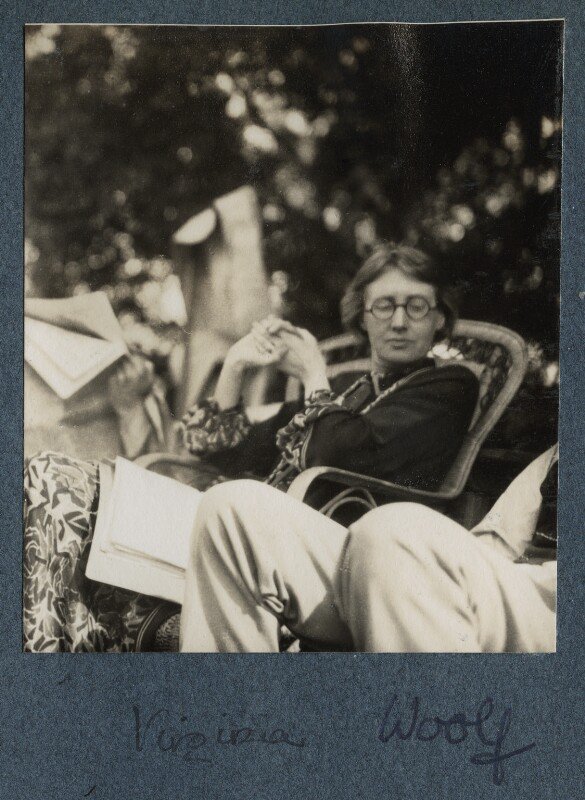 Image 1 of 1
Image 1 of 1


In the Rooms of Woolf’s Essays
Living and Thinking in the Rooms of Woolf’s Essays
Beth Daugherty
I think of Virginia Woolf’s essays as schoolrooms, full of teaching and learning about famous and not-so-famous people, places, literature, the past and the present, culture, writers and the writing life. But she often subtly teaches lessons about how to read, write, live and work as well. For example, in ‘How Should One Read a Book?’ she answers the question and suggests we approach learning to read in four developmental stages.
Woolf also uses rooms within her essays as part of her discussions. Most famously, her extended essay, A Room of One’s Own (1929), argues that women need a room and an income to write. But Woolf uses rooms in many other essays to set scenes, describe contexts, and establish metaphors while discussing reading, writing, living and working. In doing so, she gives us room to think about her topics, ourselves, and the relationship between the two. To explore some rooms, some thinking spaces, we will read and ponder four Woolf essays:
• ‘On Being Ill’
• ‘Reviewing’
• ‘Great Men’s Houses’
• ‘Professions for Women’
Questions we might think about along the way:
What does Woolf teach us about living and thinking through her use of rooms? What does she want us to see, learn, understand? Although most of these essays call attention to the writing life, do their lessons apply to other kinds of lives? If so, what kinds?
Rooms are structures, of course, actual spaces in which we live and think. Yet they function as powerful metaphors, too. How does that interplay of actual/metaphoric play out in these essays?
What contrasts, if any, does Woolf make between men and women’s rooms or men and women’s use of rooms?
Live online lecture and seminar with Beth Daugherty, retired Professor of English, Otterbein College, Ohio.
You can find some essays on our Blog page: use ‘Woolf Essay’ as a search term on the Blog. The essays are also in various editions of Woolf’s Essays:
‘On Being Ill’ (Essays, 5: 195-208); Bradshaw, ed., VW Selected Essays; Bowlby, ed., Crowded Dance of Modern Life. Also on Project Gutenberg: link and on our Blog page.
‘Reviewing’ (Essays, 6: 195-209); Bowlby, ed., Crowded Dance of Modern Life.
‘Great Men’s Houses’ (Essays, 5 294-301) Bowlby, Crowded Dance.
‘Professions for Women’ (Essays, 6 479-84); Bowlby, Crowded Dance; Bradshaw, Selected Essays. Also on Project Gutenberg: link and our Blog page.
Saturday 10 January 2026
18.00-20.00 British Time
19.00-21.00 Central European Time
Morning or lunchtime in the Americas
Fees
£33.00 Full price
£28.00 VWSGB Members
£28.00 CAMcard Holders
£28.00 Students on a low income
Living and Thinking in the Rooms of Woolf’s Essays
Beth Daugherty
I think of Virginia Woolf’s essays as schoolrooms, full of teaching and learning about famous and not-so-famous people, places, literature, the past and the present, culture, writers and the writing life. But she often subtly teaches lessons about how to read, write, live and work as well. For example, in ‘How Should One Read a Book?’ she answers the question and suggests we approach learning to read in four developmental stages.
Woolf also uses rooms within her essays as part of her discussions. Most famously, her extended essay, A Room of One’s Own (1929), argues that women need a room and an income to write. But Woolf uses rooms in many other essays to set scenes, describe contexts, and establish metaphors while discussing reading, writing, living and working. In doing so, she gives us room to think about her topics, ourselves, and the relationship between the two. To explore some rooms, some thinking spaces, we will read and ponder four Woolf essays:
• ‘On Being Ill’
• ‘Reviewing’
• ‘Great Men’s Houses’
• ‘Professions for Women’
Questions we might think about along the way:
What does Woolf teach us about living and thinking through her use of rooms? What does she want us to see, learn, understand? Although most of these essays call attention to the writing life, do their lessons apply to other kinds of lives? If so, what kinds?
Rooms are structures, of course, actual spaces in which we live and think. Yet they function as powerful metaphors, too. How does that interplay of actual/metaphoric play out in these essays?
What contrasts, if any, does Woolf make between men and women’s rooms or men and women’s use of rooms?
Live online lecture and seminar with Beth Daugherty, retired Professor of English, Otterbein College, Ohio.
You can find some essays on our Blog page: use ‘Woolf Essay’ as a search term on the Blog. The essays are also in various editions of Woolf’s Essays:
‘On Being Ill’ (Essays, 5: 195-208); Bradshaw, ed., VW Selected Essays; Bowlby, ed., Crowded Dance of Modern Life. Also on Project Gutenberg: link and on our Blog page.
‘Reviewing’ (Essays, 6: 195-209); Bowlby, ed., Crowded Dance of Modern Life.
‘Great Men’s Houses’ (Essays, 5 294-301) Bowlby, Crowded Dance.
‘Professions for Women’ (Essays, 6 479-84); Bowlby, Crowded Dance; Bradshaw, Selected Essays. Also on Project Gutenberg: link and our Blog page.
Saturday 10 January 2026
18.00-20.00 British Time
19.00-21.00 Central European Time
Morning or lunchtime in the Americas
Fees
£33.00 Full price
£28.00 VWSGB Members
£28.00 CAMcard Holders
£28.00 Students on a low income
